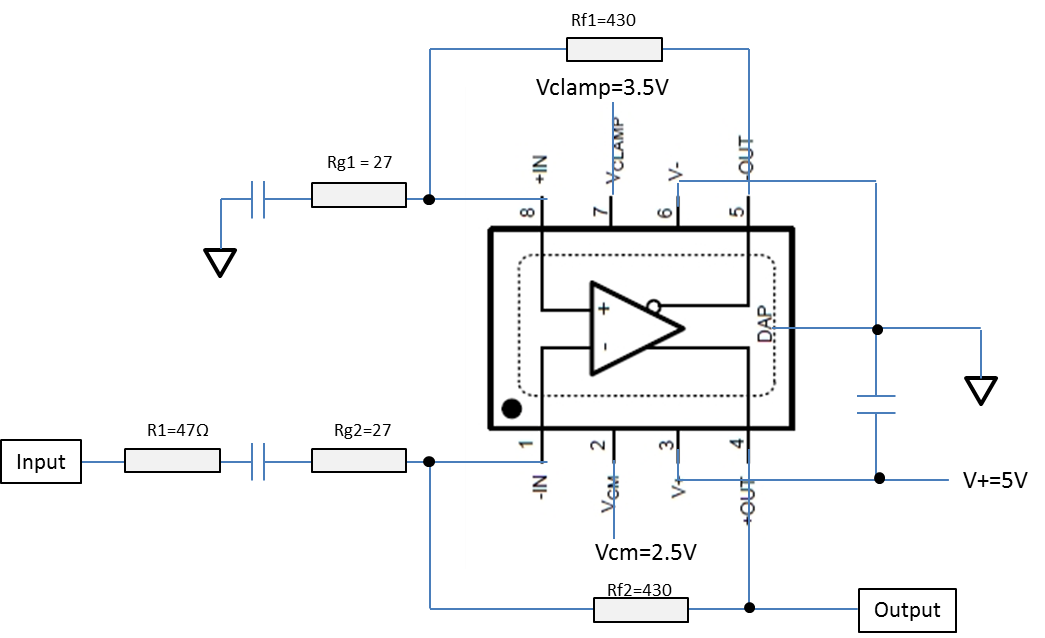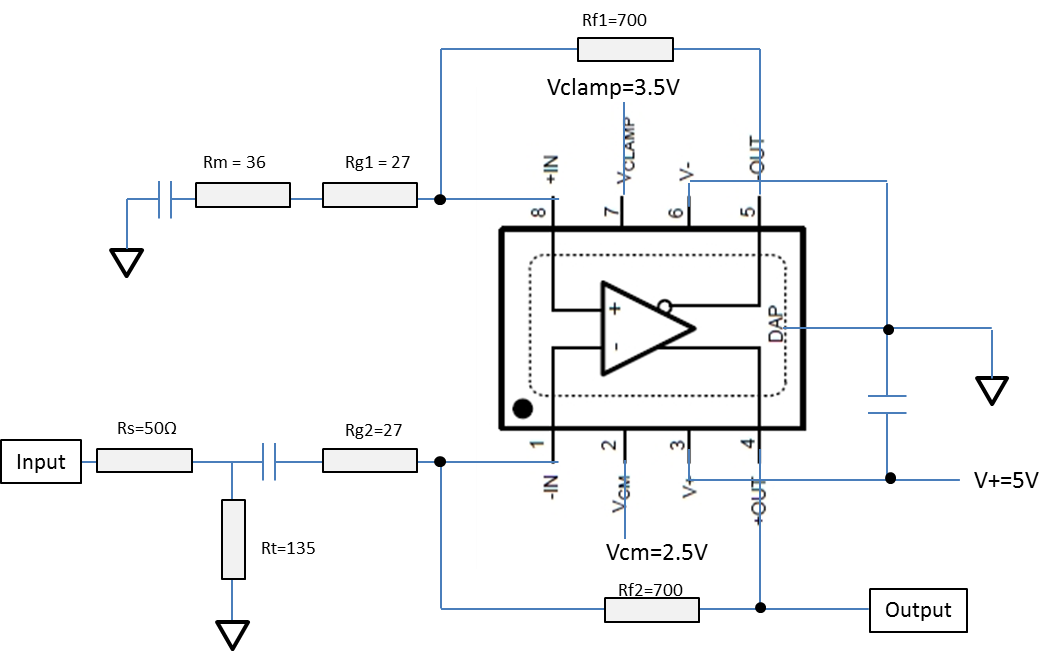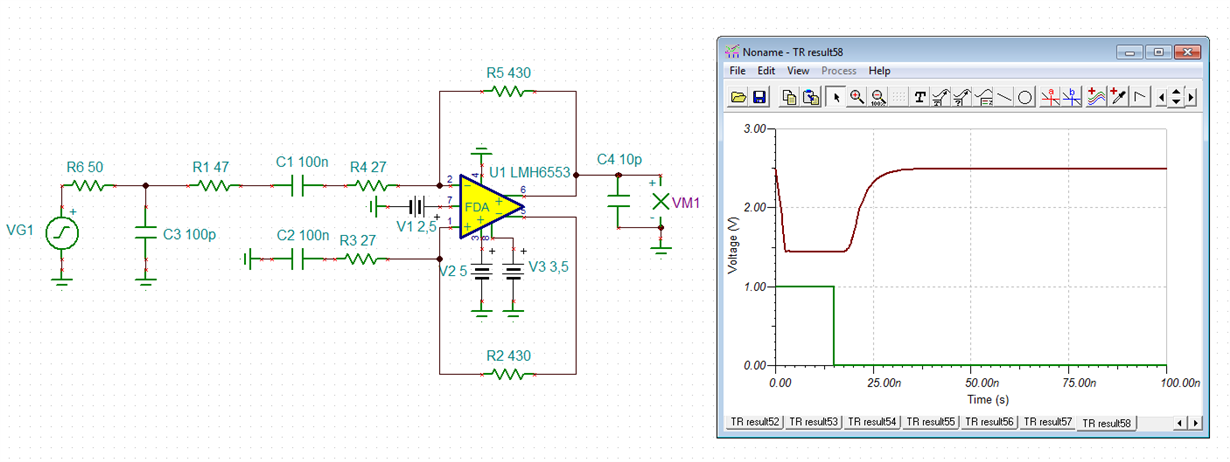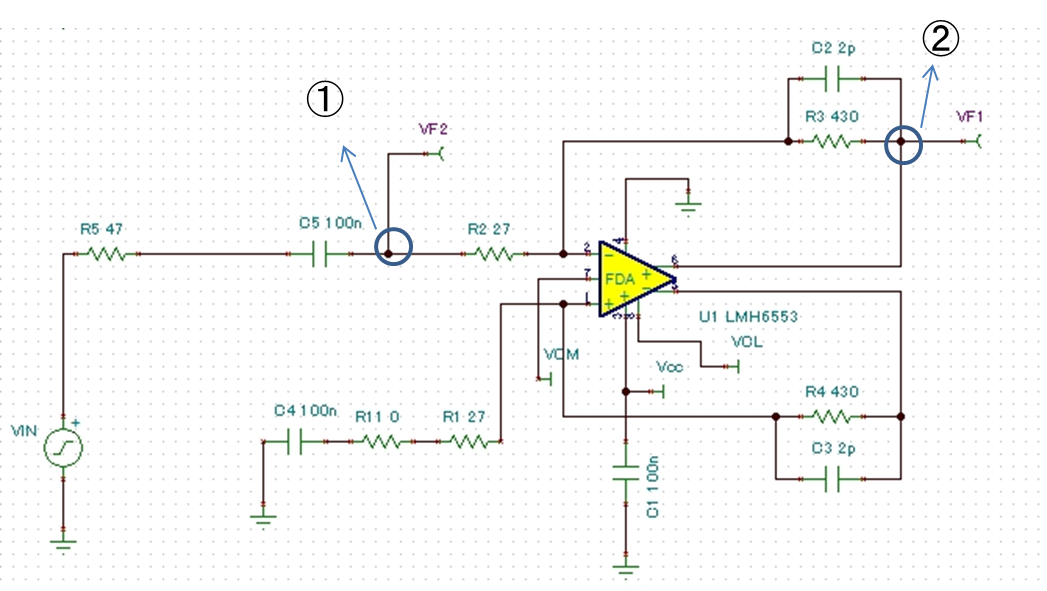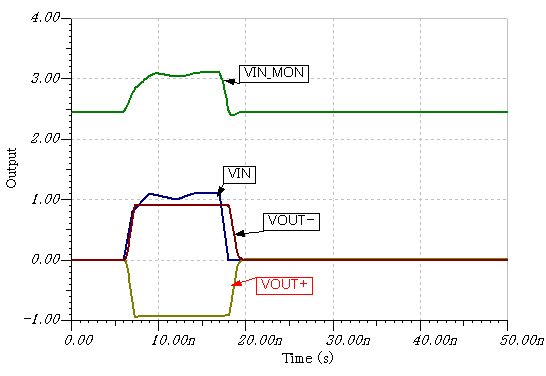Other Parts Discussed in Thread: LMH6554, TINA-TI
Hi
Our customer has some questions of LMH6553.
Could you please answer these questions?
The following is assumed 5V single power supply and single-end input circuit using LMH6553.
1.
Figure 1 of the datasheet shows 59ohm resistor in both path of Vin(+) and Vin(0) like red circle.
While, Figure 58 shows no RT in Vin(-) path.
Which circuit is adequate for single-end input and single power supply circuit?
And should these RT resistors be mandatory components for customer design?
2.
Datasheet shows recommended value of RF in Table 1 and Table 2.
Is it accepted to use different value of RT? (e.g. 400Ω)
If not, what kind of impact is expected with different value?
3.
Customer design is configured in single-end input and 5V single power supply.
What is value of common mode input range?
BestRegards



